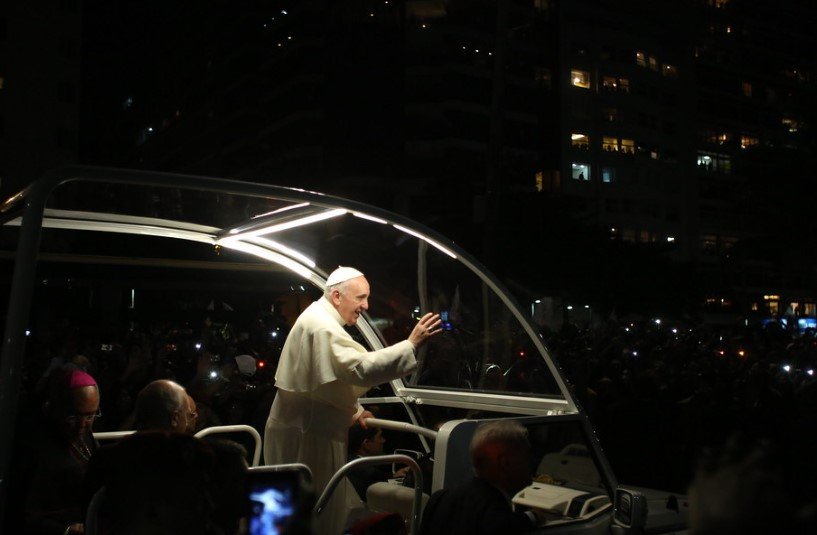A quiet end for the people’s pope, whose decade-long papacy redefined the Church’s global tone
Pope Francis, the 266th leader of the Catholic Church, died Sunday night after suffering a stroke and subsequent cardiocirculatory collapse, the Vatican confirmed. He was 88.
It marks the end of a papacy that spanned 12 turbulent years—years that saw shifting cultural tides, deep internal divisions, and the pope’s relentless focus on humility, service, and the margins of society.
Medical complications proved too great
Francis had been in frail health for some time. He’d already survived one major lung surgery in his youth, and he was no stranger to hospital rooms in recent years.
On April 21, Vatican officials said the pontiff succumbed to “a stroke, followed by a coma and irreversible cardiocirculatory collapse.” It was the culmination of months of visible decline.
According to Vatican News, the official certification was issued by Professor Andrea Arcangeli, head of the Directorate of Health and Hygiene for Vatican City State. The pope’s final moments were medically recorded using electrocardiographic thanatography.
The report added more grim details:
-
Francis had a history of acute respiratory failure
-
He had suffered from multimicrobial bilateral pneumonia
-
His lungs were scarred by multiple bronchiectases
-
He was also managing high blood pressure and type II diabetes
His death wasn’t a surprise to those in his inner circle—but it hit the faithful worldwide like a thunderclap.

A legacy shaped by service and simplicity
Jorge Mario Bergoglio was never the typical pope—not by attire, not by tone, not by background. Born in Buenos Aires, Argentina, he became the first Jesuit and first Latin American pope in history.
He chose the name Francis, after St. Francis of Assisi, signaling his intent from the start: humility, care for the poor, peace. He refused to live in the papal palace. He drove a Ford Focus. He washed the feet of prisoners.
The impact? Enormous.
-
He reoriented Vatican discussions around climate change, economic inequality, and refugee crises
-
He challenged both the left and right within the Church by showing unexpected grace to LGBTQ Catholics
-
He cracked down on sexual abuse scandals, albeit with mixed results
And most of all, he made the Church feel accessible again—especially for those who’d long felt pushed to the sidelines.
Last public appearances stirred concern
The pope’s recent health had sparked speculation for months. In February, he spent over a month in a Roman hospital battling a severe respiratory infection. Vatican aides had downplayed the severity, but observers weren’t fooled.
During Easter week, Francis appeared gaunt and noticeably breathless. He canceled multiple scheduled appearances, including the Holy Thursday liturgy and the Way of the Cross at the Colosseum.
By April, insiders admitted privately that his condition was “worsening quickly.” His stroke reportedly occurred during a quiet evening at the Domus Sanctae Marthae, where he had lived since his election in 2013.
One Vatican staffer, speaking anonymously, said: “He wanted no drama. No grand exit. Just peace.”
Global mourning begins, from Rio to Manila
News of Francis’ death spread fast, and the outpouring of grief followed instantly.
In Rio de Janeiro, thousands gathered at the Metropolitan Cathedral to honor him. A large portrait of the pope sat under flickering candlelight, surrounded by flowers and handwritten notes.
In the Philippines—home to Asia’s largest Catholic population—church bells rang in every major city.
Francis touched believers and skeptics alike. In Buenos Aires, his face adorned murals, street corners, and even buses. Across Africa and the Middle East, where Catholic populations remain smaller but devout, the mood was equally somber.
Even some non-Catholics saw him as a rare moral voice in a loud and divided world.
What comes next: A Church without Francis
With Francis gone, the Catholic Church now enters a new period of uncertainty.
Traditionally, a papal interregnum begins with a period of mourning, followed by the convening of a conclave—where cardinals under the age of 80 vote in secret to elect a new pope. That process is expected to begin within the next few weeks.
Let’s look at the transition timeline that generally follows a pope’s death:
| Stage | Estimated Timeframe |
|---|---|
| Funeral and official mourning | Within 6–10 days |
| Papal conclave begins | 15–20 days post-death |
| New pope elected | Varies (average 2–5 days) |
No frontrunner has emerged yet, but several names have floated within Vatican circles for years—Cardinal Matteo Zuppi of Italy, Cardinal Peter Turkson of Ghana, and Cardinal Luis Antonio Tagle of the Philippines among them.
But whoever follows will do so under the long shadow of a man who, despite illness, shook the Church’s center of gravity.
A quiet death, a thunderous legacy
In a world where leaders often speak in soundbites and slogans, Francis whispered.
He wasn’t flashy. He didn’t seem to crave headlines. Yet somehow, he stayed in them. And not because of scandal or spectacle, but because of something harder to define: moral weight.
He once said, “The measure of greatness of a society is found in the way it treats those most in need.” He lived like he believed it.
